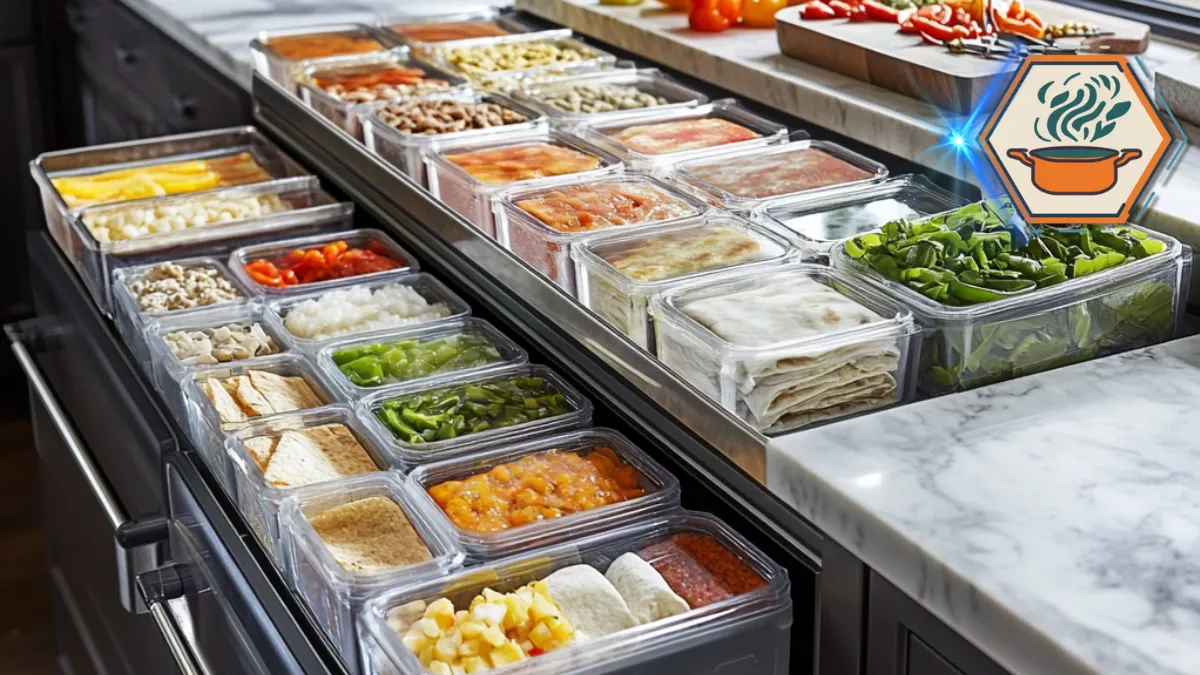Table of Contents
Common Mistakes When Preparing Frozen Burritos
Overview of Frozen Burrito Preparation
Mastering the best frozen burrito tips is essential for achieving delicious, crispy, and flavorful burritos that taste just as good as freshly made ones. These frozen burrito tips help prevent common mistakes that can ruin texture and flavor.
Preparing frozen burritos may seem easy, but small mistakes can ruin the taste and texture. Using the right frozen burrito tips ensures your burrito stays flavorful, crispy, and satisfying. Many people unknowingly add the wrong ingredients or skip essential steps, leading to soggy, bland burritos. Mastering these frozen burrito tips will help you create burritos that taste as fresh as when they were made.
Top 5 Frozen Burrito Tips for Better Results
- Use Quality Ingredients: Choose ingredients that freeze well, such as cooked meats and roasted vegetables.
- Proper Wrapping: Always double-wrap your burritos with plastic wrap and foil to avoid freezer burn.
- Label and Date: One of the best frozen burrito tips is to label your burritos for freshness.
- Reheat Properly: Use an oven or air fryer instead of a microwave for a crispy finish.
- Balance Fillings: One of the most important frozen burrito tips is to avoid overstuffing. Keeping your burrito well-balanced ensures even reheating and a consistent flavor in every bite.
Ingredients That Compromise Texture
| Ingredient | Why to Avoid | Better Alternative |
|---|---|---|
| Tomatoes (Raw) | High water content causes sogginess. | Roasted or sun-dried tomatoes. |
| Zucchini | Releases too much moisture when frozen. | Grilled or sautéed zucchini (well-drained). |
| Raw Spinach | Becomes watery and slimy after freezing. | Blanched and drained spinach. |
| Sour Cream/Cream Cheese | Separates and becomes watery after reheating. | Add after reheating or use shredded cheese. |
| Uncooked Rice/Beans | Absorbs moisture, leading to a mushy texture. | Fully cook and dry before assembling. |
| Soft Tortillas | Tears easily and becomes soggy when reheated. | Use thicker flour tortillas. |
| Juicy Meats (e.g., ground beef without draining) | Makes burritos greasy and soggy. | Drain cooked meats and season well. |
Frozen Burrito Tips: Avoid High-Moisture Vegetables
A common mistake when making frozen burritos is including high-moisture vegetables. Ingredients like tomatoes, zucchini, and raw spinach release excess water during freezing and reheating, causing soggy tortillas. One of the most essential frozen burrito tips is to choose low-moisture ingredients to avoid soggy burritos. Incorporating this frozen burrito tip will keep your tortilla crisp and your fillings flavorful.
Better alternatives:
- Roast vegetables like bell peppers and mushrooms.
- Blanch and drain leafy greens.
- Pat vegetables dry before adding them to your burrito.
Limit Creamy Sauces and Dairy Products
Heavy dairy products, such as sour cream and cream cheese, don’t freeze well. They often separate and create a watery mess after reheating. A vital frozen burrito tip is to avoid using heavy dairy products before freezing. Instead, follow expert frozen burrito tips by adding sauces and dairy after reheating to maintain texture and taste.
Better alternatives:
- Use hard cheeses like cheddar or Monterey Jack.
- Add creamy sauces after reheating.
For more ideas, check out how to upgrade frozen burritos for better flavor.
Foods That Increase Sogginess
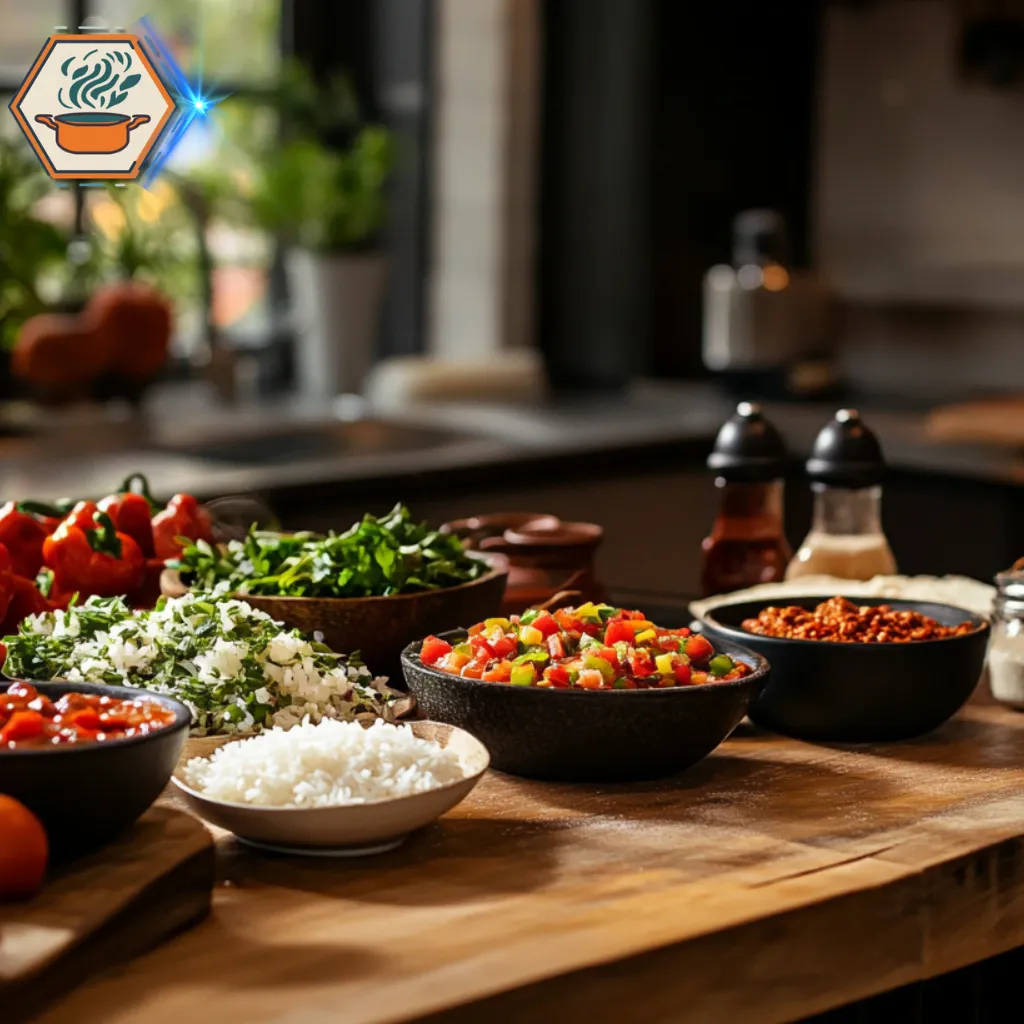
| Mistake | Frozen Burrito Tips to Fix It |
|---|---|
| Using raw vegetables | Use roasted or sautéed vegetables instead |
| Adding creamy sauces before freezing | Add sauces after reheating or use thick sauces like queso |
| Overstuffing burritos | Follow frozen burrito tips to balance wet and dry fillings |
Using Uncooked Rice or Beans
Uncooked or undercooked rice and beans absorb moisture during freezing. This leads to a mushy texture after reheating. One of the best frozen burrito tips is to fully cook these ingredients before adding them.
Pro tips:
- Cook rice and beans completely.
- Let them cool and dry before assembly.
Overloading with Wet Ingredients
Adding too many wet ingredients like salsa or juicy meats leads to soggy burritos. A helpful frozen burrito tip is to balance wet and dry fillings for the perfect texture. This frozen burrito tip ensures that your burritos stay crisp and flavorful after freezing.
Better options:
- Use thicker sauces like refried beans.
- Limit juicy fillings like tomatoes.
Skipping Proper Wrapping Techniques
Improper wrapping leads to freezer burn and soggy tortillas. One of the most effective frozen burrito tips is to wrap burritos tightly.
Pro tips:
- Wrap burritos in foil or plastic wrap.
- Store them in airtight containers.
Freezing is an effective method to preserve food by slowing down the movement of molecules, causing microbes to enter a dormant stage, and preventing the growth of microorganisms that cause both food spoilage and foodborne illness. Food Safety and Inspection Service
Cooking Mistakes That Ruin Frozen Burritos
Microwaving Without Adjustments
Microwaving is convenient but often results in uneven heating. Following proper frozen burrito tips can prevent uneven heating and improve texture. One of the best frozen burrito tips is to thaw your burrito overnight for better results.
Pro tips:
- Thaw burritos overnight in the fridge.
- Wrap in a damp paper towel before microwaving.
- Flip halfway through microwaving.
Ignoring Oven or Air Fryer Methods
Another mistake is relying only on the microwave. A crucial frozen burrito tip is to use an oven or air fryer for a crispy texture.
Best methods:
- Oven: Bake at 375°F for 25–30 minutes.
- Air Fryer: Heat at 350°F for 10–15 minutes.
Learn more about the best way to cook frozen burritos.
Storage Mistakes That Affect Quality
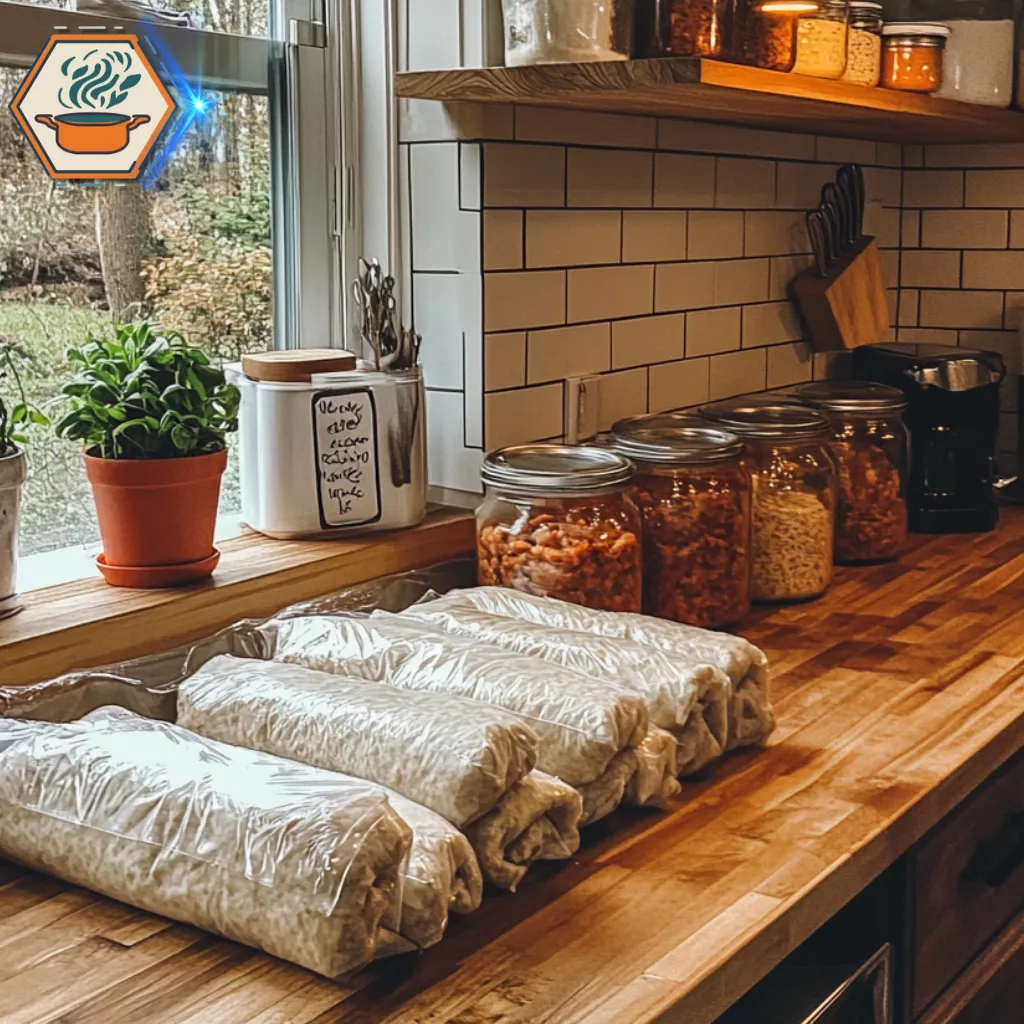
Freezing While Still Warm
Freezing warm burritos creates ice crystals, leading to soggy tortillas. One of the essential frozen burrito tips is to let burritos cool completely before freezing.
Not Labeling and Dating Burritos
Forgetting to label burritos can result in eating them past their prime. A smart frozen burrito tip is to label burritos with dates and ingredients.
Storing with Strong-Smelling Foods
Burritos can absorb odors from other foods in the freezer. One of the most important frozen burrito tips is to store them in airtight containers away from strong-smelling items.
Poor Ingredient Choices for Freezing
Choosing the right ingredients is crucial when preparing frozen burritos. Understanding how each component behaves during freezing and reheating can make all the difference. Certain ingredients can drastically impact the texture and flavor of your burrito after freezing and reheating. For the best outcome, focus on selecting fillings that maintain their taste and consistency. Avoiding these common mistakes is essential for achieving the best results, ensuring your burritos stay flavorful, satisfying, and free from sogginess or dryness.
Fresh Herbs and Soft Greens
Fresh herbs and soft greens like lettuce, arugula, and basil are poor choices for freezing. These delicate ingredients wilt, lose their vibrant color, and become slimy once thawed, negatively impacting the burrito’s overall texture and flavor. The moisture content in these greens causes them to break down, turning mushy and unappetizing.
Better Alternatives:
- Blanched Spinach: Lightly blanch spinach and drain excess water to retain flavor and texture.
- Dried Herbs: Use dried or crushed herbs like oregano, basil, or parsley for added flavor without the risk of sogginess.
- Roasted Greens: Kale or Swiss chard can be sautéed and drained, making them suitable for freezing.
Raw Eggs and Egg-Based Sauces
Raw eggs and egg-based sauces like mayonnaise, hollandaise, or aioli don’t freeze well. These ingredients tend to separate and develop an unpleasant texture after thawing, leading to watery and grainy fillings. The consistency change can ruin the overall taste and mouthfeel of the burrito.
Frozen Burrito Tips for Eggs:
- Use Scrambled Eggs: Fully cooked scrambled eggs freeze well and maintain their soft texture after reheating.
- Avoid Egg-Based Sauces: Instead of mayonnaise, opt for spreads like hummus or thick salsa after reheating.
- Cheese-Based Sauces: Replace egg sauces with cheese sauces that hold up better in freezing conditions.
Assembly Mistakes That Lead to Failure
Even with the right ingredients, poor assembly techniques can result in soggy, flavorless, or poorly reheated burritos. Paying attention to assembly is one of the most effective frozen burrito tips for ensuring high-quality results.
Overfilling the Burrito
While it might be tempting to load up on fillings, overstuffing makes burritos hard to wrap securely and increases the risk of bursting during cooking. An overfilled burrito can also lead to uneven heating, with cold centers and overcooked edges.
Better Assembly Tips:
- Portion Control: Use ¾ cup of filling for medium tortillas and 1 cup for larger ones.
- Layer Evenly: Spread ingredients evenly across the tortilla, leaving space around the edges for proper sealing.
- Fold Tightly: Fold in the sides first, then roll tightly to create a compact and secure burrito.
Ignoring Layering Order
Incorrect layering of ingredients can lead to a soggy burrito. Wet fillings placed directly against the tortilla can cause it to become mushy and fall apart during reheating.
Proper Layering Strategy:
- Start with Dry Ingredients: Place rice, beans, and cheese closest to the tortilla to act as a moisture barrier.
- Add Moist Fillings to the Center: Salsa, sauces, and meats should go in the middle to prevent the tortilla from becoming soggy.
- Balance Wet and Dry Fillings: A good ratio ensures that the burrito stays intact and flavorful.
Skipping a Double Wrap
Failing to properly wrap your burritos can lead to freezer burn, ice crystals, and loss of flavor. Skipping this critical step reduces the burrito’s freshness and texture after reheating.
Best Wrapping Techniques:
- First Layer: Wrap the burrito tightly in plastic wrap or parchment paper to seal in moisture.
- Second Layer: Add a layer of aluminum foil to protect against freezer burn.
- Label and Date: Always label burritos with the freezing date and type of filling to keep track of freshness.
- Storage Tip: Store the wrapped burritos in airtight freezer bags for extra protection.
Pro Tip: If you plan to reheat the burrito in an oven or air fryer, remove the plastic wrap and keep the foil on for even heating and a crispy exterior.
Ingredients to Avoid in Frozen Burritos
Creating the perfect frozen burrito requires careful selection of ingredients. Choosing the wrong components can result in soggy, flavorless, or unappetizing burritos. For those seeking frozen burrito tips, understanding which ingredients to avoid is essential. This guide will help you make the best choices for texture and taste.
High-Moisture Vegetables and Their Impact
Vegetables are a nutritious and flavorful addition to burritos. However, some vegetables contain high water content, which can ruin the texture of a frozen burrito.
Problematic Vegetables
- Tomatoes: Release excess moisture when thawed, leading to soggy tortillas.
- Zucchini and Cucumbers: High water content causes mushiness after reheating.
- Lettuce and Spinach: These greens wilt and lose texture when frozen.
Alternatives
- Roasted Bell Peppers: Offer flavor without excessive moisture.
- Caramelized Onions: Provide sweetness and maintain texture.
- Sauteed Mushrooms: Add umami and hold up well in freezing.
Dairy Products That Separate When Frozen
Certain dairy products don’t freeze well and can alter the taste and texture of your burrito.
Dairy to Avoid
- Sour Cream: Becomes watery and separates when thawed.
- Soft Cheeses (e.g., Brie, Ricotta): Lose structure and become grainy.
Better Dairy Options
- Hard Cheeses (e.g., Cheddar, Monterey Jack): Melt evenly and maintain texture.
- Cream Cheese Blends: Mixed with herbs or spices, they stay creamy after freezing.
For insights on how dairy behaves in other recipes, check out our guide on Why Milk Instead of Water in Meatloaf.
Meats That Change Texture After Freezing
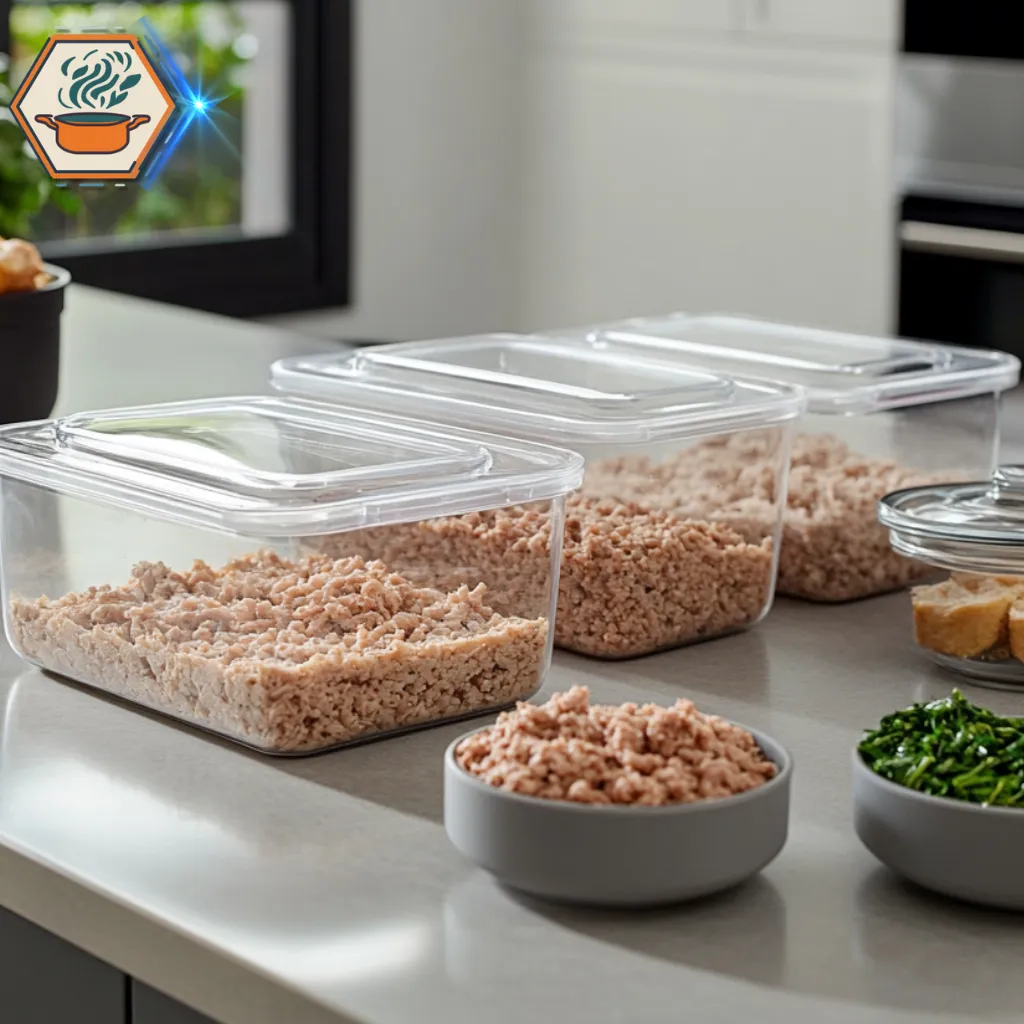
Choosing the right type of meat is crucial for a satisfying burrito. Some meats lose their texture or flavor after being frozen.
Meats to Limit
- Ground Turkey: Often dries out after freezing and reheating.
- Fatty Meats: Excess fat can create a greasy texture.
Preferred Meats
- Shredded Chicken or Beef: Holds moisture and flavor well.
- Lean Ground Beef: Cooks evenly and retains taste.
For more information on proper freezing techniques, consult the USDA freezing guidelines.
Expert Techniques to Improve Frozen Burrito Quality
Selecting the Right Fillings for Freezing
Choosing the proper fillings is crucial for maintaining the texture and flavor of frozen burritos. Ingredients with high moisture content can make the burrito soggy when reheated. It’s best to avoid watery vegetables like tomatoes and lettuce. Instead, opt for:
- Cooked beans (black beans, pinto beans)
- Grilled or shredded meats (chicken, beef, pork)
- Roasted vegetables (peppers, onions, mushrooms)
- Shredded cheese (cheddar, mozzarella)
Frozen burrito tips suggest lightly cooking vegetables to remove excess moisture. Meats should be fully cooked and seasoned to enhance flavor after freezing.
For more ideas on creative fillings, check out our guide on What is a Pizza Bite.
Using Sauces Wisely in Frozen Burritos
Sauces can either improve or ruin the texture of frozen burritos. Thick, creamy sauces freeze better than watery ones. Consider these options:
- Refried beans as a moisture barrier
- Thick salsas instead of watery versions
- Creamy cheese sauces like queso
Spread sauces evenly but sparingly to avoid sogginess. One of the most effective frozen burrito tips is to place sauces in the center of the burrito, away from the edges, to prevent leaks during reheating. Following these frozen burrito tips ensures your burritos remain flavorful, moist, and perfectly textured after freezing.
Cooking Methods for Reheating Burritos
Reheating frozen burritos correctly ensures they stay flavorful and evenly cooked. There are several ways to do this:
Oven Method
- Preheat the oven to 375°F (190°C).
- Wrap the burrito in foil.
- Bake for 30-40 minutes or until heated through.
Air Fryer Method
- Preheat the air fryer to 350°F (175°C).
- Place the burrito in the basket.
- Cook for 12-15 minutes, flipping halfway through.
Microwave Method
- Wrap the burrito in a damp paper towel.
- Heat on medium power for 4-6 minutes, rotating halfway.
The oven and air fryer provide a crispy texture, while the microwave is quicker but can make the tortilla softer. According to frozen burrito tips, using the oven or air fryer yields the best results.
Proper Wrapping Techniques to Avoid Freezer Burn
Freezer burn can ruin the taste and texture of burritos. Proper wrapping is key to preserving quality. Follow these steps:
- First Layer: Wrap burritos tightly in plastic wrap or parchment paper.
- Second Layer: Add a layer of aluminum foil for extra protection.
- Storage: Place wrapped burritos in an airtight freezer bag.
- Label: Write the date and type of burrito on the bag.
Removing as much air as possible from the bag prevents ice crystals. This method aligns with essential frozen burrito tips for long-term storage.
Cooking and Reheating Frozen Burritos
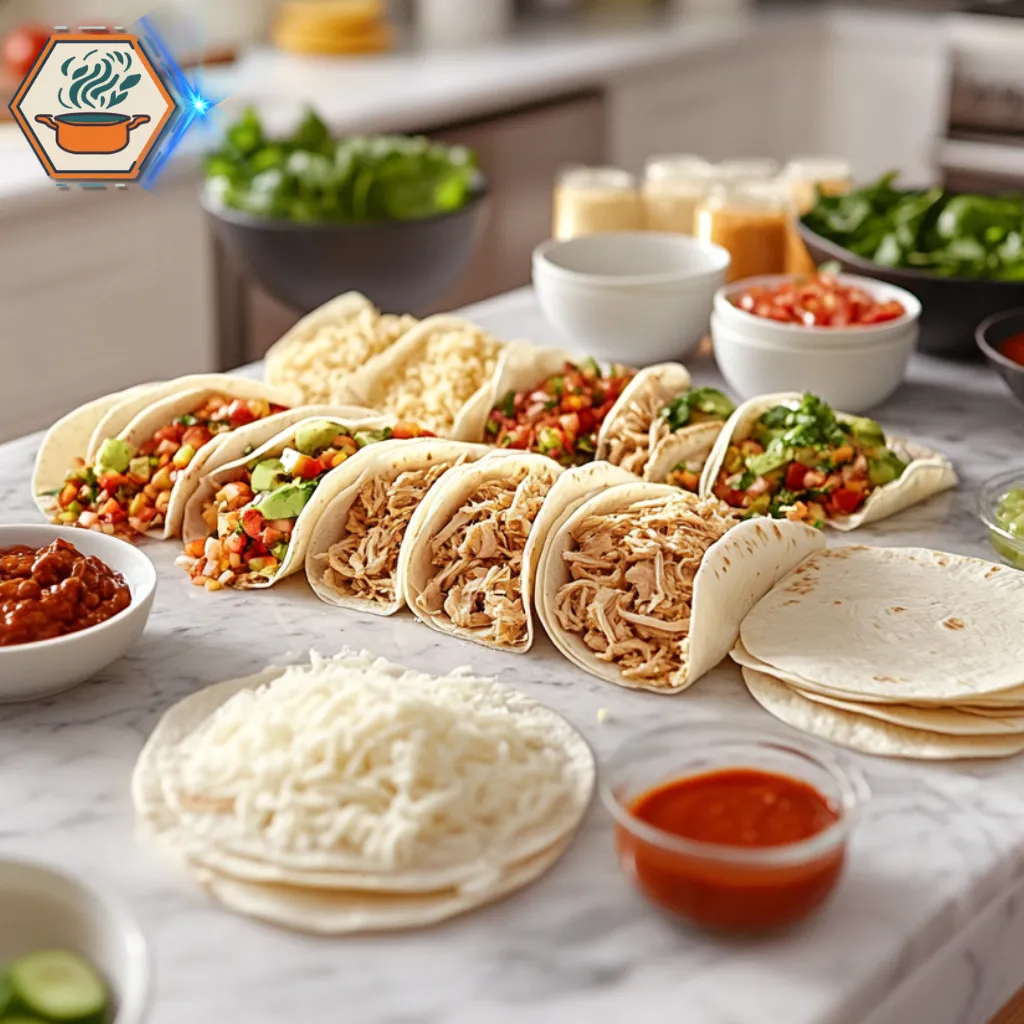
Perfecting Homemade Frozen Burritos
Frozen burrito tips are essential for creating delicious and convenient meals at home. Crafting the perfect homemade frozen burrito starts with choosing quality ingredients and assembling them properly. This ensures that your burrito stays flavorful and maintains its texture after freezing and reheating.
Choosing the Right Ingredients
- Tortillas: Use large, soft flour tortillas for easy wrapping and minimal tearing.
- Fillings: Opt for cooked proteins like shredded chicken, ground beef, or beans. Avoid raw vegetables that release water when frozen.
- Cheese: Shredded cheeses like cheddar or Monterey Jack melt well.
- Sauces: Use thick sauces to prevent sogginess. Salsa, enchilada sauce, or refried beans work well.
Assembly Techniques
- Layering: Place heavier ingredients like beans and meat first, followed by cheese and sauces.
- Wrapping: Fold in the sides first, then roll tightly to avoid leakage.
- Portion Control: Avoid overfilling to prevent tearing and uneven heating.
Step-by-Step Guide to Building Burritos
- Prepare the Fillings: Fully cook all proteins and vegetables.
- Warm the Tortillas: Heat tortillas slightly to make them pliable.
- Assemble the Burrito: Layer fillings evenly, keeping portions balanced.
- Wrap Securely: Fold and roll tightly, ensuring a secure seal.
- Pre-Freeze: Place wrapped burritos on a baking sheet and freeze for 1–2 hours.
- Final Storage: Transfer to airtight freezer bags or containers.
Best Storage Methods for Long-Term Freezing
Proper storage ensures that frozen burritos maintain their quality over time. Follow these tips for optimal results:
- Pre-Freeze Individually: Freeze burritos individually before storing them together to prevent sticking.
- Use Airtight Packaging: Wrap each burrito in foil or plastic wrap, then place them in freezer-safe bags.
- Label and Date: Clearly label the packaging with the type of burrito and the freezing date.
- Avoid Overcrowding: Store burritos in a single layer to allow even freezing.
Creative Burrito Recipes for Every Taste
Adding variety to your frozen burrito lineup keeps meals exciting. Here are some creative ideas:
Protein-Packed Burritos
- Chicken Fajita Burritos: Grilled chicken, sautéed peppers, onions, and shredded cheese.
- Beef and Bean Burritos: Seasoned ground beef, refried beans, and cheddar cheese.
Vegetarian Options
- Veggie and Rice Burritos: Black beans, brown rice, roasted veggies, and avocado.
- Breakfast Burritos: Scrambled eggs, cheese, and sautéed spinach.
Global Flavors
- Korean BBQ Burritos: Marinated beef, kimchi, and sesame rice.
- Mediterranean Burritos: Hummus, falafel, and tabbouleh.
Ready to Upgrade Your Burrito Game?
By following these frozen burrito tips, you’ll enjoy flavorful, crispy burritos every time. Try these tips today and taste the difference!

